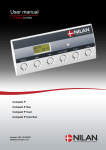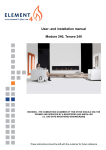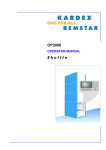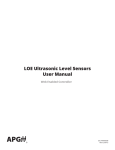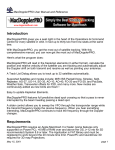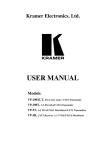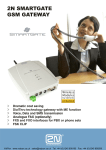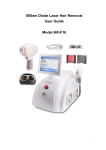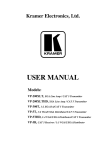Download Com Centre - Mainland Radio
Transcript
Scanner Radio FAQ Modes of Operation: SlMPLEX - A simplex channel is a channel where two or more users all transmit and receive on the same frequency Only one user can transmit at m Co time. A listener will hear all sides of the conversation. Although this mode of operation offers very limited range, it is used for V/UHF Aircraft Comms Internationally as range is greatly increased due to altitude of the Aircraft... Line of site between Aircraft and Ground can be hundreds of miles. This is the most common mode of operation on the HF Bands. DUPLEX - A duplex channel involves two completely different frequencies that are associated with the duplex channels. An example will best explain duplex operation. Suppose we have two associated duplex channel frequencies, the first frequency A and the second frequency B. Then one party transmits on frequency A and receives on frequency B, whilst the second party transmits on frequency B and receives on frequency A. A listener will only hear one side of the conversation and will have to switch between frequencies A and B to hear both sides of the conversation. Duplex operation is sometimes referred to as "Cross Band" operation and allows for simultaneous two way conversations. Cross band operation is not used as often as it could be. It offers some security in that people like us will only hear one side of the conversation, and even if you did know the other frequency it would require the use of two memories, two scanners or your scanner would need to offer a DUPLEX Memory mode. Ce FULL DUPLEX - is the same as DUPLEX except both parties are receiving and transmitting at the same time....The Christchurch VHF DX Group provide a phone in Canterbury and is an excellent example of FULL DUPLEX operation.(144.1800 input and 438.8000 output). Alot of HF Ship to Shore Phone Links are also operated this way. REPEATER - A repeater channel also involves two completely different frequencies that are associated with the repeater channel. A repeater is an entr unmanned automatic receiver/transmitter that receives on frequency A and then re- transmits the received signal on frequency B. The users of the repeater channel all transmit on frequency A and all receive on frequency B. Frequency A is known as the repeater INPUT frequency and frequency B is known as the repeater OUTPUT frequency. The INPUT frequency is often referred to as the repeater REVERSE channel. The difference between the repeater INPUT and OUTPUT frequencies is often referred to as the repeater SPLIT or OFFSET frequency. Repeaters are nearly always located on top of high locations such as tall buildings, hills and mountains and are used to increase the area of coverage to mobile users. The repeater may have a 10 to 100 watts transmitter with elaborate aerial systems whilst the mobile user may have only a 0.5 watt battery powered handheld transceiver. Without the repeater the 0.5 watt battery powered transceiver may only have a range of less than a kilometre in a city whilst via a repeater the same transceiver may have a range of over 100 kilometres. A listener generally listens to the repeater OUTPUT frequency and will hear both sides of the conversation. Unless you've got a descent Scanner and Antenna System this mode of operation is what most s Scanner Enthusiasts tend to monitor. If you monitor your local Amateur Radio Repeaters you will get a ver good example of this mode. All VHF Amateur Repeaters have a 600Khz split. (+600 for 147.0000Mhz and -600Khz if below 147.0000 Mhz). On most occasions Hams will move off a repeater and operate on a simplex channel if they can hear each other on the input (Repeater REVERSE).. Making the repeater available of other users. Ma What is propagation, multi path, and fading? Propagation: Multipath: a inl Electromagnetic wave propagation describes how a wave gets from one point to another depending upon the environmental conditions it encounters alon the way. For example, a low frequency wave that encounters a plaster wall will likely travel through it. On the other hand, a much higher frequency wav will bounce off the wall. And a wave of an intermediate frequency might bounce off the wall but lose a substantial amount of energy in the process. It is apparent that propagation can have severe effects on the received signal. Fading: nd In a typical wireless environment, there is not a direct line-of-sight (LOS) path between the transmitter and the receiver. In fact, the electromagnetic waves emitted by the transmitter usually take different paths in getting to the receiver, depending upon the obstacles in the environment. As a result, the received signal is actually a sum of the various contributions, each of which differs in both amplitude and phase. In many cases, the signals combine in a destructive manner, thereby severely degrading the signal's strength. The receiver is faced with the difficult task of properly demodulating and decoding the signal into something that resembles the original. Although emerging receiver technologies are combating the multipath problem, it can still seriously inhibit a wireless system's performance. Selectivity: dio Ra Fading describes rapid changes in a radio signal's amplitude over a short period of time or travel distance. Fading is a result of multipath. In fact, it is caused by interference between multiple replicas of the transmitted signal. Measure of a receiver's ability to block adjacent signals on either side of the frequency currently being received. If the receiver does not have good selectivity, the data from an adjacent signal can interfere with the data on the frequency being listened to causing distortion and general annoyance. Receivers designed with better selectivity are typically more expensive. Intermodulation: Process where multiple signals mix together. This may occur naturally outside of the receiver or in the front-end of the receiver. Either way, it results in the generation of a "false" frequency. The resultant audio of this signal is usually a combination of the audio portions of each signal involved. Sometimes only one of the original signals can be heard making it appear to be an image. This typically occurs when the initial stages of the receiver are "overpowered" by very strong, local signals. Radios with superior designs have better filtering which are better at keeping multiple signals from entering thereby helping to eliminate intermodulation. Usually referred to as simply 'intermod' You've probably got an external antenna on you cheapy handheld or living in a really high RF Area if this problem occurs too often... Auto-Store: Feature used to automatically store active frequencies into memory channels during a search operation. Effectively a search operation that, instead of stopping the search to hear the active transmission, simply stores the active transmission frequency in a memory channel and then continues with the search. Some radios have "smart" auto-store in that they won't store the same frequency multiple times. Radios with "dumb" auto-store simply write the active frequency to memory without regard to whether it has already been stored or not. m Co Alpha-tag: Feature allowing memory channels and other resources to be labelled with user-specified alpha-numeric text. Usually found on more costly models. What is the difference between Search and Scan.? Your Scanner will have some sort of memory bank or banks frequency storage system. You will of entered frequencies of local user e.g.. Police, fire, Ambulance etc., or your local supplier may of installed some for you. Pressing Scan means your scanner will look at each individual Memorized Frequency and stop on any activity. Now Searching is what you do if you're trying to find a new Frequency. For example, if you were looking for the local Police Frequencies you would search between about 75.2750 Mhz and 76.6000 Mhz in steps of 12.5Khz. Some Scanners have 4 Plus pre-prommable search bands pre-installed, talk to your dealer! Ce What is Delay? It would be better called "Pause" because thats exactly what happens when your scanner stops on an active memory or search frequency but pauses(approx 2 Secs) after the received signal has stopped. Thus giving time for the other party to respond to what ever was happening on that particular frequency. Most Scanners offer a very simple pause/delay feature and the more sophisticated models offer a fully adjustable delay time. entr What are steps? It is the frequency increment between adjacent channels, this is the band channel spacing. This is generally 12.5kHz or 25kHz for a majority of repeaters. Although there is some new bands with 6.25kHz spacing. The Cell Phone Band is 30kHz. Frequency Offset: And there are one or two bands that are extra tricky because they start off with a 12.5kHz e.g. 418.0125kHz then increment in 25kHz, now you may be thinking "So what I'll just do it in 12.5kHz" and yes that will work but it'll take you twice as long to search the band. Fortunately not many bands in New Zealand require this feature, but it is available on some scanners and is usually called Frequency Offset.. The Frequency changes when I push enter! What is the "Anttenuator? Ma If your scanner is set for 25kHz steps and you try to enter something like 75.7125 it will change to 75.725 Mhz. You need to change your step to 12.5kHz. Unfortunately some scanners are not designed with New Zealand in mind and you just can't change steps. In some models the error is only 2.5Khz whic use to be near enough. New requirement for Commercial Repeaters mean that instead of the old + or minus 5kHz bandwidth they are now suppose to be or minus 2.5Khz. Meaning for us scanner buffs, near enough will not be good enough. a inl Again this is something not offered on all scanners. In some situations it is an easy out for Scanner manufacturers when cutting costs on RF input filterin stages. However it does have it's uses. The Attentuator adds ?dB of signal reduction to the RF input stages of your scanner, to reduce possible effects of strong signal overloading due to connection to an external aerial or when the receiver is used in close proximity to strong transmissions. Remember Handheld Scanner was designed as a portable device and unless you're prepared to spend over $800.00 on one, don't put a high gain outside aerial on it. Especially if you're living in a larger town with high RF. Yupiteru didn't make a mobile/base version(MVT8000) of there MVT7000 for nothing. nd Noise Limiter? A noise limiter can help reduce the effects of noise spikes and pulses. e.g. Powerline Noise, Ignition Noise. More effective on HF and lower VHF Frequencies. VFO Mode. What is Memory Mode? dio Ra This is a manual tuning mode. The term VFO historically means "Variable Frequency Oscillator" but today refers to a tunable data store which contai frequency, mode, attenuator etc. And infact most Ham Transceivers offer 2 VFO's and som Proffessional Scanning Receivers 2 or more selectable an tunable VFO's. Searching from one VFO Frequency to the other is a quick means of searching, without the need of re-programming a Search Memory. When in Memory mode, you would usually have a Memory Channel displayed with Mode and Memory Number. What you used for VFO tuning will now be used to manually view programmed memories. A Memory is a Frequency, Mode, etc that you have entered via the keypad or found by searching a certain band, and then saved into it's own memory for future monitoring and/or scanning. You might have 10 groups with 100 Memories positions allocated to it. For example you would store all your Marine Channels in Group1, Police in Group 2, Railways in Group 3, Aircraft in Group 4, Ham Radio in Group 5 and so on. In the case of AR8200 and AR8000 they use letters for Banks istead of Bank numbers.(eg. Bank A, Bank B etc) Rechargeable Batteries Nicad Batteries. m Co Shortened form of Nickel-Cadmium. May also be seen as 'nicad' or 'ni-cd'. A rechargeable battery. Some scanners use a proprietary or custom battery pack from which they receive their power.Others can use regular AA rechargeable cells. Once depleted, they can not be used until they have been recharged. While the up-front cost is much more per cell, the ability to recharge the cell hundreds of times saves money in the long run. However, to see thes savings, the cells must be treated properly. Doing so will usually permit 300-500 recharge cycles depending on the battery. Careless use can easily lower this to 100-200 cycles. NiCds come in many flavors. There are basic cells which provide a minimun power rating of 600mAh and there are the high-capacity types which can provide 800 - 1100mAh. Unlike AA cells which have a long shelf life, ni-cads discharge rather rapidly (usually about 30-45 days) when left unused. Care must be taken to see that they do not sit uncharged for too long lest they become unusable. You're not suppose to charge them unless they're flat. But personally it's a real pain taking the nicads out every time you plug in the DC Adapter. I've never worried about it. Every now and then I'll let them go flat just to help prolon there life, otherwise I can be plugging my DC Supply in and out all day. The nicads may only last me 2 or 3 years but it saves alot of mucking around. If you've got one of those horrible scanners with a special nicad pack you might like to be a little more careful because when the nicad pack does finally give up the ghost you won't be able to buy a replacement pack from th manufacturer. I recommend to all our clients that they buy a scanner that uses standard AA Nicads, which also means you can run your scanner on ordinary AA alkalines. NiMH: Ce Shortened form of Nickel-Metal Hydride.A more recent development in rechargeable battery technology. NiMH cells provide around 25% more power tha a comparable NiCd, cost about 1.5 - 2 times as much and about half the number of recharge cycles. NiMH cells are much more finicky when it comes t being properly charged when compared to NiCds and need special chargers to prevent overcharging and keep charging temperatures within thermal limits. BNC Antenna Sockets Monitor Button: entr Be careful! Did you realise there is at least two types of BNC Plugs available in New Zealand? One is 50 ohms and the other more commonly sold is the 75 ohms Plug. You need the 50 ohm. Now you ask why? The 75 ohm plug and socket has a slightly larger centre pin. You would notice no problem plugging a 75 ohm plug into your scanner, infact it may seem to fit a bit tighter. The real problem is....when you re-install the correct fitting antenna, as supplied with your scanner. It will eventually become sloppy..and you'll end up with a wobbly antenna and intermittent isolation of the antenna. Some of the Amateur Radio Transceivers are now being fitted with SMA Sockets which eliminates this possibility. If you are monitoring a specific memory or VFO Frequency, pressing the "Monitor" button will open the squelch. Frequency/Memory Pass: Lock Out: Same as for Pass. Free Scan: Ma Causes your scanner to bypass that particular Memory or Frequency. a inl Free Scan is a predetermined time that your scanner will remain on an active frequency before resuming Scan or Search even though the frequency is still active. Very useful for monitoring Cell phones or monitoring activity on local Ham Repeaters. Sometimes called "SKIP" on Yupiteru Scanners. Select Scan: Your Scanner may have up to 20 memory banks with up to 50 memories per bank. Select Scan allows you to tag some of those memories from selected banks and only Scan those ones selected. nd Mode Scan: You may have a Memory Bank full of Civil Defence and Red Cross HF and VHF Frequencies. All the local channels will be NFM where as the HF(Shortwave) will all be USB. If there was a locally base emergency (Flooding etc) then you would probably have no need to scan the HF Memories. Easy answer is to do a Mode Scan on that particular Memory Bank..NFM only..This Feature is only offered in certain Models. dio Ra Auto Store: Some Scanners have an AUTO STORE feature which will automatically store and save a active frequency when searching. This is an excellent feature an is one of the most frequently used features on my own Scanner. Band Scope: Basically a graphical display of band activity which depending on the model will display up to 10MHz band width. Not a commonly used feature but the software Controlled type of Band Scope (Spectrum Display) is very useful if analyisng time and activity usage etc. Davco Electronics Designed some very nice software for doing this on the AR8000 and, AOR have also some for the AOR3000A. What is Cloning? Cloning is when you have a special DATA Lead that takes the DATA from the Programmed Scanner(Master) and is copied across onto a another Scanner(Slave) of the same type.Ususally requires a special Cloning lead. Is it illegal to own a Scanner in New Zealand? No. What is CTCSS? Used by some amateur band repeaters and most commercial RT Services where shared resources are used, CTCSS ensures that operators only hear traffic intended for them. A CTCSS Decoder board fitted internally or externally will display this tone. There are 50 different tones, of which you will not be able to hear due to to the low frequencies at which they use and the audio characteristics of most receivers. m Co What is DTMF. The tones you send from your telephone are DTMF, each number being of a slight difference. "DUAL TONE MULTI FREQUENCY". There are external and internal devices available that will read this data and convert this tone to the digit it represents. AOR offer this feature in the AR5000 as standard and is an option for the AR8200. Digital Recording? Some Scanner manufacturers offer a add-on board which provides continuous recording of your Scanner. Most will only save about 20 Seconds so you'v got to be quick. Great if you missed the address or call sign... Ce Priority Channels? Designates normally one memory that takes priority over any other operation. What is Squelch? entr The squelch circuit in your scanner is like a gate. If the signal is too low, everything gets through ..... noise, weak signals, and strong signals. If the gate is set too high, nothing gets through... not even the strong channels. When the gate is correctly set, all signals should get through. Some experimentation is needed here. Unfortunately some scanners have a terrible squelch system and the setting varies from one mode to the other. Higher priced Scanners have a far better squelch system that offer other user adjustable features that greatly enhanc there operation. E.g. Audio Squelch, Signal Strength Squelch.etc. Discriminator Output....What do they mean? There is a growing interest in tapping the discriminator audio out of various scanners for decoding of a variety of signals, including CTCSS, POCSAG, DTMF tones, RTTY, FAX, POCFLEX etc. Signals cannot reliably be take from TAPE or REC jacks, headphone jacks, and EXT SPEAKER jacks because of the voice-band filtering that is done between the signal source and these output jacks.Therefore, it is necessary to tap directly to the output of the discriminator chip in your scanner.It's very simple, all you will need is a suitable socket fitted to your receiver and have it wire to the Discriminator IC in your scanner... Ma What Modes and Where? nd a inl Generally speaking most Commercial Voice only type Radio Traffic is NFM (Narrow FM). There are still some old AM repeaters in the 100mHz to 108mHz Band but these should be all but gone by mid 1999. There are also a few AM Repeaters in the 150mHz to 154mHz area's.and "A" Band. The only other Band still usin AM is the Aircraft bands on VHF and UHF. Any Transmission that contains music etc will require alot more bandwidth and is all WFM(Wide FM), this normally includes most Proffessional Cordless Mics and Studio Links. If you ever take your Scanner into a live concert and listen to their cordless Mics, you'll be amazed at the difference the Sound Guys make with processing of the Artists Singing between the mics and the PA's.. After hearing a few cordless mics you'll start to wonder whether these guys can really sing at all. As for the Stum mics at a cricket match (NFM), well thats another story........but if you think those one day matches are played for real (The Best Team Wins), maybe you should leave your scanner at home! Except for 99.9% of Radio Broadcast stations below 30mHz which are all AM. Most Scanners will say FM for Wide FM and nFM for Narrow FM. Just to cofuse you little bit more there is now a mode that is(Super narrow FM or sNFM), narrower than the existing NFM, and is becoming the new standard for general voice traffic, thus allowing more channels in a band (Narrower Bandwidth! and Spacing). This is not too bigger problem, for most of us. using our existing NFM mode is fine. If your Scanner does not allow you to enter the correct frequency without rounding off (wrong spacing/step) then this will be a problem issue as more and more traffic uses these narrower bands. The HF(Shortwave) bands have alot of Commerical, Amateur, Military, Marine, Aircraft, Amatuer etc voice ommunications. All of what is normally USB(Upper Sideband) except Amateur Radio Operators who generally use LSB(Lower Sideband) below 10mHz. I say only generally ...... if you are unabl to resolve a Sideband station on USB then try LSB. dio Ra There are lots of other noises on HF that are Weather Fax, Packet and other digital modes that require a computer and addition software to decode. There's plenty of Shareware on the Net that works with your soundcard for decoding some of this data plus there are a few dedicated devices for decodin these noises. If you intend trying it I strongly suggest you start off with something easy lik CW(Morse Code). Theres still plenty of it on HF. Theres quite alot of Data noises etc on the VHF and UHF Bands. Theres a few software packages around for this and likewise there some stand alone units that a pretty amazing. E.g Pocsa and Pocflex (Pocket Paging). Some Scanners are now capable of decodin Analoge Scrambling as used on alot of the latest Uniden Cordless Phone an DTMF and CTCSS. What are Birdies? Birdies are internally generated frequencies that cause the scanner to stop during search or scan. A good Scanner should not have too many, if your scanner offers the Frequency Pass facility then this is seldom a problem. Known Birdies are sometimes published in the user manual. My Scanner keeps stopping just noise: Chances are is it is a locally generated noise from your computer or some other electronic device. RFI Is it illegal to listen to Cell Phones? No it is not illegal listen to anything in New Zealand, but acting on the information, which could be just recording it on cassette tape is illegal. Th Regulations are interpreted by Scanner listeners usually in a way that suits what them best with no consideration of any regulations or at least pretend not to understand them!.My advice is only share frequencies to those you know and keep the rest to yourself. Are Scanners Cellular blocked? m Co If you thought importing a Scanner form USA or Australia would save you a few dollars, well yes it may of, but it is probably Cellular Blocked. So far we have not had this requirement enforced upon us. To keep the general public and the service providers from getting to hysterical about you and I listening to their frequencies, keep what you do hear to yourself. What they don't know won't hurt them..... Decoding Pocket Pagers - ? If you thought monitoring all those Pocket pagers out there is difficult, then think again. It's one of the easiest DATA modes to Decode. The Software is free and we can sell you the interface that goes between your computer and your receiver. An additional socket needs to be fitted to your receiver, which is wired internally to a special IC (Discriminator) already in your receiver..Simple as that. The Interface is powered from your existing 12V DC Scanner power pack. Ce The Discone Antenna: entr Type of outdoor antenna with omni-directional reception. Usually two to three feet in height and designed for outdoor mounting. Designed to cover a a wide range of frequencies; typically 25 - 1300MHz. Consisting of a cental hub from which 8 - 10 radial elements project downward at an angle, as well as 8 - 10 short elements radiating horizontally. Som discones have a long element mounted on top of the central hub for better reception in the lower VHF band. The Diamond D130 Discone is also used by Amateur Radio Operaters on 50Mhz, 220Mhz, 144Mhz, 440Mhz and 1296Mhz. and made of high quality stainless steel. The Gain of the Discone is similar to a standard 1/2 Wave Antenna used for Single Frequency operation. The greatest advantage is the huge frequency coverage and low radiation pattern. . Ma So Where do I start? a inl If you haven't owned a scanner before be very careful....just because the carton has a picture of a fire engine on it does not mean it will receive your local fire service. No Scanner manufacturer is thinking about th New Zealand Band Plans when designing a new scanner. If you are limited to funds and/or are only interested in Aircraft or perhaps you are a Train Buff and just want to monitor the Railway network you should be able to pick up somethin reasonably cheap. However if you want to be able to monitor whatever is there to receive you'll need a Scanner with Full VHF to UHF Coverage and perhaps HF(Shortwave) as well. We strongly suggest you visit your local Scanner supplier and have him demonstrate the Scanner you are considering and confirm with the Dealer that the scanner you are buying will do what to wanted it to and if you're local there's no apparent reason why they can't preprogram some channels for you and provide a list of locally used frequencies. We hear many horror stories about salesman not having a clue about scanners and taking your money for something that will only depress you and have you wishing you'd never got into the hobby. Especially when you go back to him 2 weeks later for some advice and be told "I've never actually used that one". Just what you wanted to hear hey! What NOT to Buy! nd You can contact us to discuss a Scanner that will suite your needs, or speak to someone you can trust that already owns a Scanner .....and will gaurantee that the Scanner you are about to buy will receive exactly what "YOU" want t hear..eg. Railways, Police, Fire, Ambulance, Aircraft, Cordless Phones, Military, Shortwave Broadcast, Civil Defence, Red Cross, Amateur Radio, Companies, Security, Shopping Centre's, Flying Doctor Services, Pagin Services, FM Broadcasts, Stage Mics, Cricket Stump Mics, Broadcast Studio Links, Television Audio, Camera Crews, Mountain Radio, Conservation Dept, Search and Rescue, Surf Clubs, Electricity Suppliers, disriminator output for Pager decoding, etc. dio Ra 1. If it uses a sealed type battery pack then I don't recommend you buy it, not even a new one.... I can almost guarantee that you won't be able to buy a new battery pack should you need one in the future .. You should look out for one that uses standard AA Nicads. Reason one is that they are easily obtained, secondly nicads don't last anywhere near as long as a normal AA Alkaline Dry Cell Battery.You can buy AA Penlites from any local Dairy and Service Station and Toy Sho ....Nothing worse than being on a Train Enthusiast trip and your nicads crap out...I've seen it happen to those with special nicad packs....nothing they can do. First thing those Scanner owners do when they get home is try to sell it to some other sucker..(Don't be one yourself). 2. If you can't change mode (AM,FM,Nfm,USB,LSB etc) and change steps on any band, the scanner may not be suitable for use in New Zealand. Communication Receivers etc Scanners prices range from $200.00 to $4500.00. You get usually what you pay for ......and if you don't, just return it to the dealer within 7 days and demand a refund. 3. If you're buyin secondhand,always ask why is the Scanner being sold? And if there's no manual....can the seller prove they actually own it! Without a manual it's not worth purchasin .. 4. The Dealer or Private seller should be capable of demonstrating the Scanner and be prepared to offer you any assistance in the future. In fact it's quite normal for our customers to get a brief run through of a particular scanner prior to purchasing, but after taking it home and reading their operating manual, they find the need to come back and get more indepth assistance in setting up their new scanner. Is my Trusty old Scanner now useless? Question.. I am interested to know if my ability to pick up the fire service on my uniden ubc60xlt, will be effected by there change in channels recently. It seems there has been a change already, in that the messages have stopped and only come through now and then. I understand this is because they have changed from a am to fm band. I used to pick up the fire service in Wellington, where I am, on 457.450, I have tried several other frequencies, and dont seem to be getting anymore? Is it that my trusty old scanner is now useless? or is there another frequency I should revert to?? Answer.. m Co Fire service has shifted off 106 Mhz AM and is now sharing the 75 Mhz band with Police, and in most area's have taken over an exisiting Police Repeater, or even sharing a channel with Police! Depending on the age and supplier of your UBC60, theres a sad chance that for example 75.7125 is not frequency your Scanner will except.. Theres a alot of scanners out there, they aren't all compatible with the New Zealand Band Plan.. Unfortunately your UBC60 is not designed to Band Search, so finding new frequencies on the UBC60 is almost an impossible task. If you really do enjoy scanning I suggest you consider purchasing a real Scanner , Full Coverage etc... DON'T PANIC... Your UBC60 is isn't history yet. They are very easy to modify for Discriminator out, forDiscriminatorDecoding Paging Data. After Sales Service and Customer Support: Ce Dealers are legally required to provide a 12 month warranty on all new Receivers and usually 3 months Secondhand Scanners. Most Dealers will only Service what they sell.......Don't expect a pleasant reception if you tell them you imported from Overseas, or purchased from an opposition Company.. Put yourself in the Retailers shoes.. .How would you feel?. As with most Retail Businesses Servicing is not a revenue earner, it is a service to loyal customers. Please save yourself the embarrasement! If you imported your scanner from Overseas, send it there for any future service. ©2002 The Com Centre Group of Companies entr Ma nd a inl dio Ra






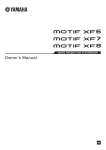
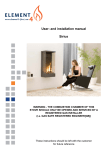
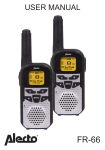
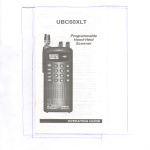
![Stealth Protect Series catalogue 2011_We[...]](http://vs1.manualzilla.com/store/data/005809212_1-caf297493bfcf938dba2b64bb0d79842-150x150.png)
